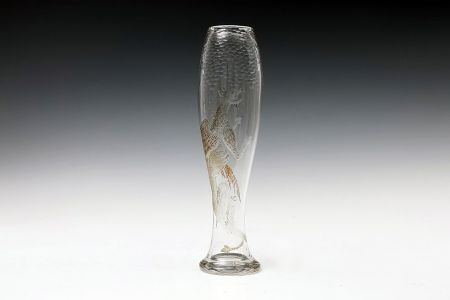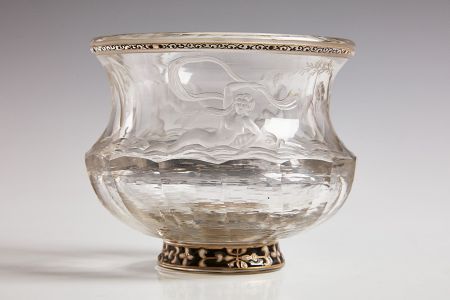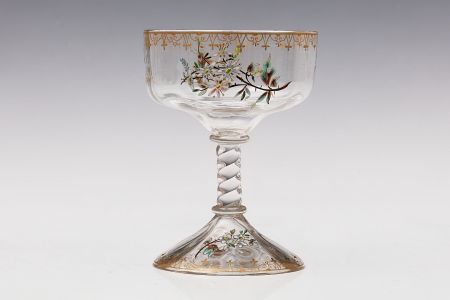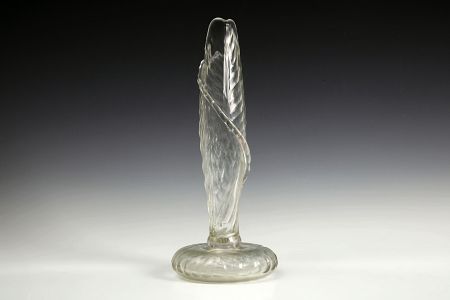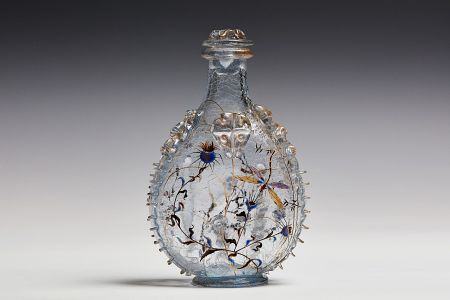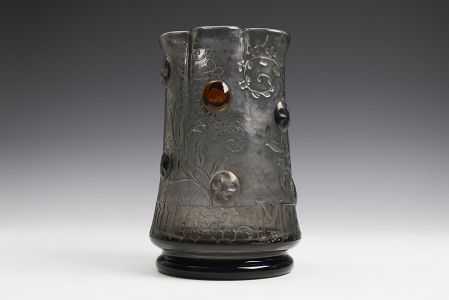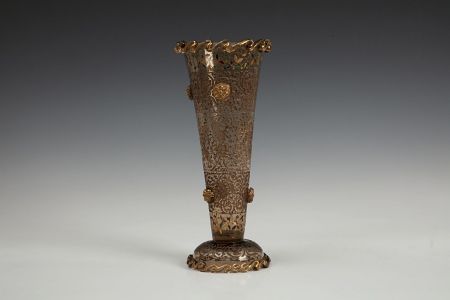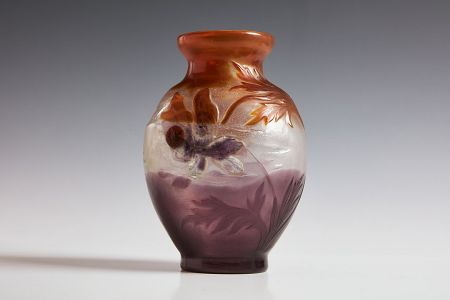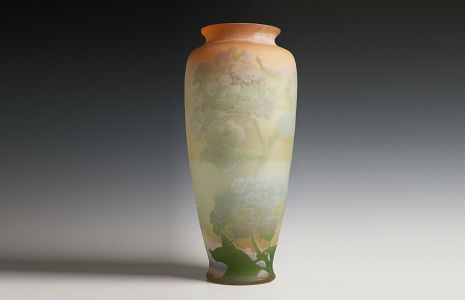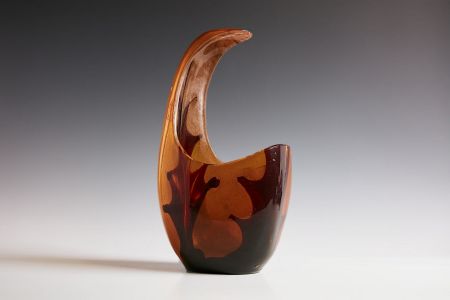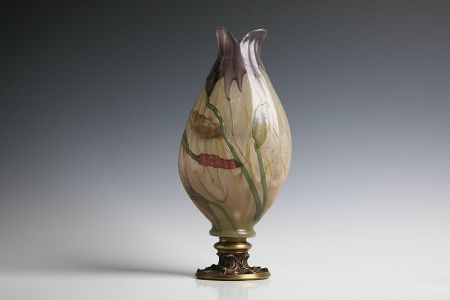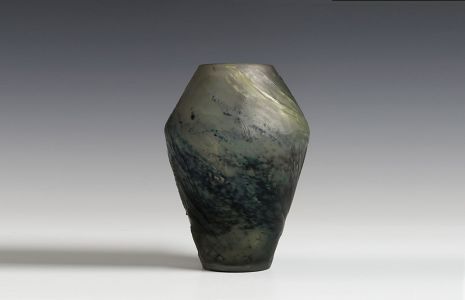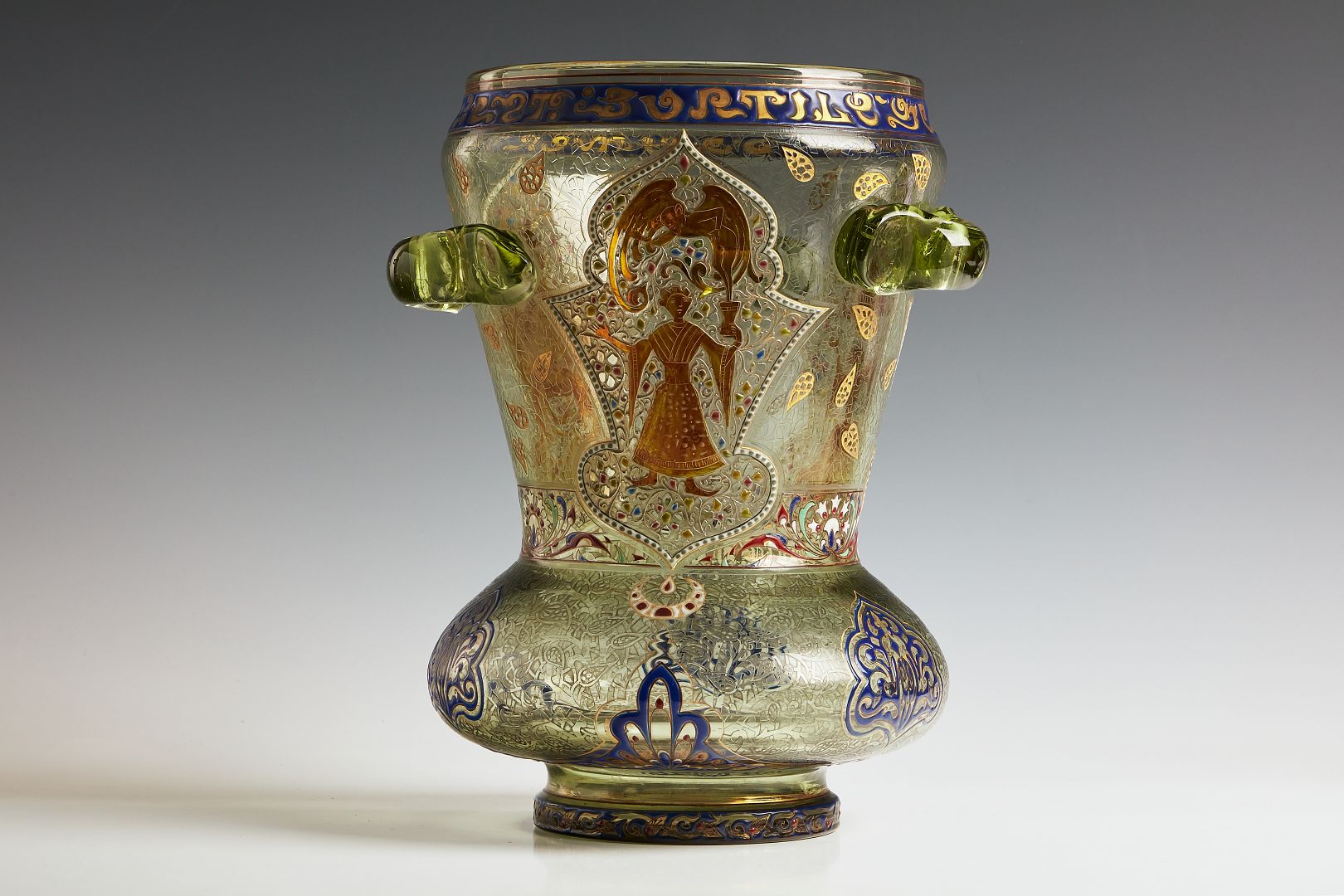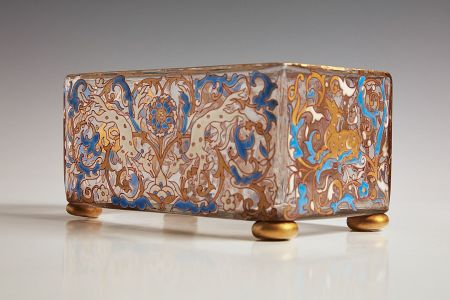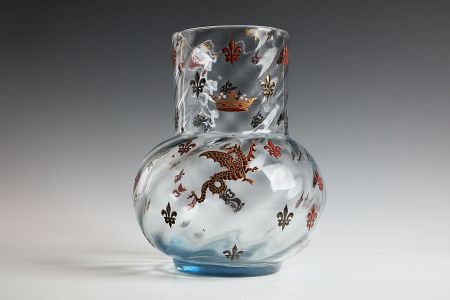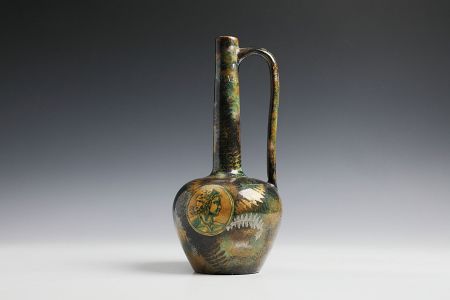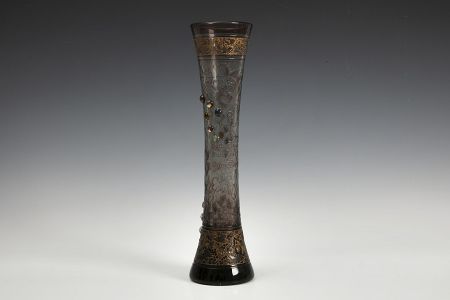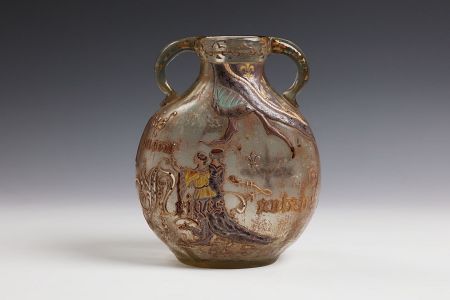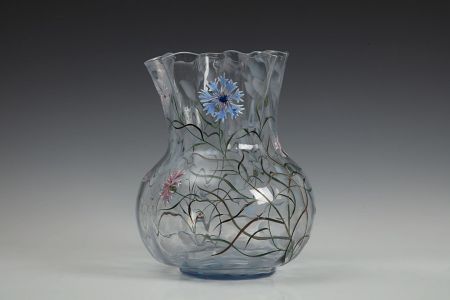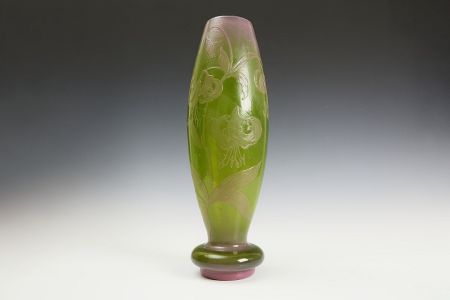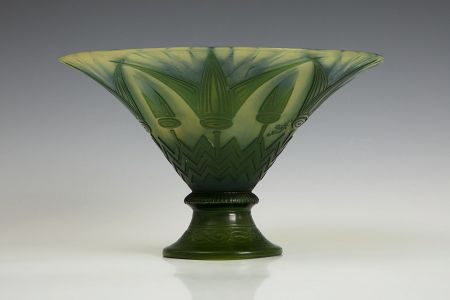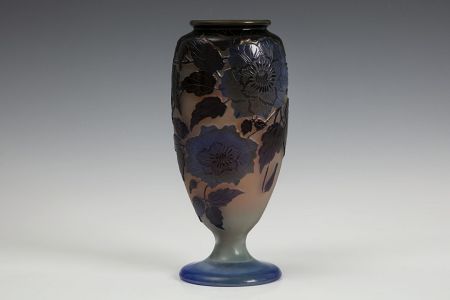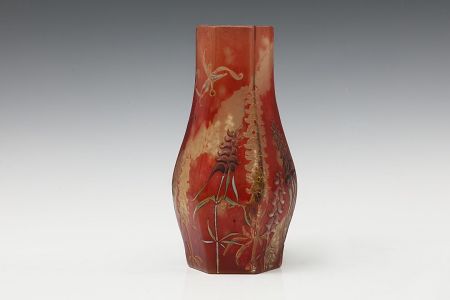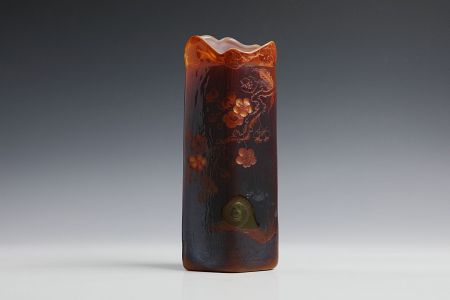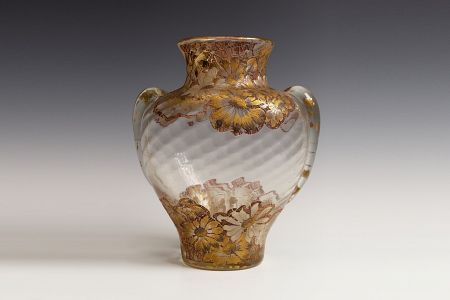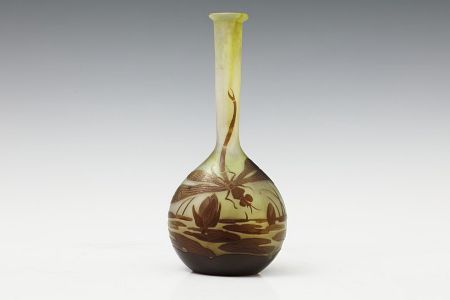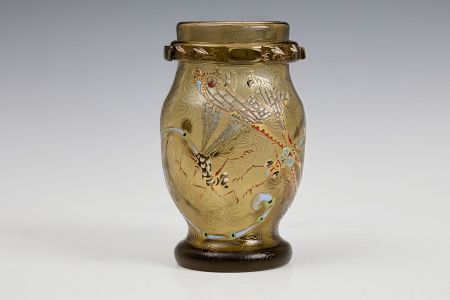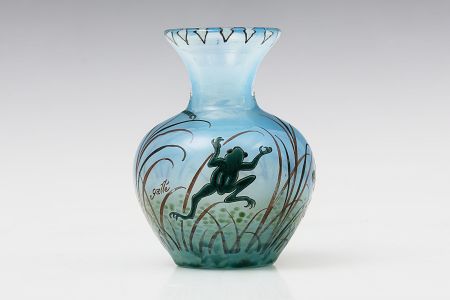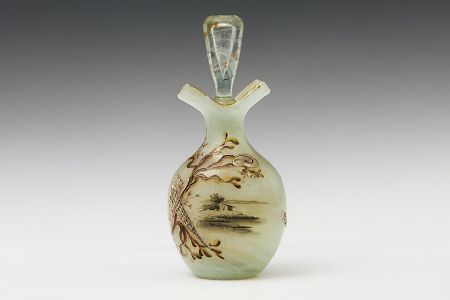Émile Gallé
May 4, 1846 – September 23, 1904
«Imaginer des thèmes propres à revêtir de lignes, de formes, de nuances, de pensées, les parements de nos demeures et les objets d’utilité ou de pur agrément, adapter son dessein aux moyens d’élaboration propres à chaque matière, métal ou bois, marbre ou tissu, cela est une occupation absorbante, certes. Mais elle est plus sérieuse au fond, plus grave de conséquences, que le compositeur d’ornements ne le soupçonne d’habitude.
Toute mise en action de l’effort humain, si infime que, souvent, le résultat paraisse, se résume dans le geste du semeur, geste redoutable parfois. Or, inconsidérément ou de propos délibéré, le dessinateur, lui aussi, fait œuvre de semeur. Il ensemence un champ dévolu à une culture spéciale, le décor, à des outils, à des ouvriers, à des germes, à des récoltes déterminées».
Ecrits pour l'art, Émile Gallé. LIBRAIRIE RENOUARD, H. LAURENS, ÉDITEUR 6 RUE DE TOURNON, 6. Paris, 1908.
Timeline
- 1846 Born in Nancy, Lorraine
- 1858 Entered lyceum in Nancy
- 1865-1866 Studied at the University of Architecture and Art Industry in Weimar
- 1870-1871 Franco-Prussian War, volunteered for the front
- 1874 Took over the art direction of the family business
- 1875 Married Henriette Grimm. Four daughters were born in the marriage
- 1877 Headed the family firm
- 1878 For the first time presented his works at Exposition Universelle in Paris
- 1880s Search for personal style
- 1894 Set up a mass-production glassworks on rue La Garenne; the beginning of "industrial" period in the firm's work
- 1889 Manifested results at the Exposition Universelle in Paris. The firm received Grand Prix; Gallé was awarded the Order of the Legion of Honor (Ordre national de la Légion d'honneur)
- 1900 The Exposition Universelle in Paris, the firm products were awarded gold medals and the Grand Prix, Émile Gallé was granted the title of the Commander of the Legion of Honor
- 1901 The Provincial Alliance of the Industries of Art or the Nancy School was established. Gallé took over as the president
- 1904 September 23 Emile Galle died f leukemia
Émile Gallé was not a professional painter. However, he managed to become one of those who defined the stylistic direction of the entire period of European art – the Art Nouveau style. A situation occurred in the history of art that had never happened before –a glassmaker became the pioneer of the style, not architects or painters that were representatives of "major" forms in art.
Émile Gallé was born in the family of Charles Gallé, a businessman and owner of the firm Gallé-Reinemer that was engaged in carrying out orders and supplying the market with earthenware, silverware, glassware, furniture and mirrors. While Émile was studying at the lyceum and university, he demonstrated interest in humanitarian sciences, botany, chemistry, mineralogy, philosophy and art. Since school years, Émile Gallé travelled extensively in Europe. He saw art collections in the museums of Dresden, Leipzig and Carlsbad. Studied oriental art at South Kensington and examined the Louvre art collection (1971), studied the art of Italy (1877), Belgium (1880), Germany (1884), and 18th century Chinese laminated glass at the Berlin Museum of Applied Arts (the collection of the Prussian Ambassador to Beijing A. von Brandt). During his stay in Paris in 1871, Émile Gallé got to know the creativity of modern glassmakers – Philippe-Joseph Brocard and François-Eugène Rousseau. Wide-ranging encyclopedic knowledge in diverse areas hereinafter defined the creative method of the glassmaker, which involved regular experimenting, abundance of encouragement sources and implemented motifs, ambiguous interpretation of images.
The firm Gallé-Reinemer cooperated with the faience factory in Saint-Clément and glass manufactory Burgun, Schverer & Cie in Meisenthal. Émile Gallé was engaged in the family business from 1863. The sketches of faience items made for the Saint-Clément factory were among his first works... Gallé was engaged in creating ceramics until 1892, but much more successful and renowned were the glass items that he created. After completing his studies in 1866-67, Galle undergone practical training at the Meisenthal factory and mastered the technology of glass production. It was the moment when the talent of the “glass maestro” began to crystallize.
Émile Gallé was a patriot, as manifested in his willingness to go to the front to defend his native land at the outbreak of the Franco-Prussian War. Throughout his life, Gallé was passionately worried about the division of Lorraine, with great love and trepidation he investigated the region plant diversity and implemented it as a decorative solution for the glass items that he created.
In 1873, the father of Émile Gallé moved to 39 Rue La Garenne. Gallé-son also transferred his art workshop from Saint-Clémen to the same place and rather soon cooperation of Émile Gallé with this factory ceased. From 1874, Émile Gallé headed up artistic direction of production and in 1877, after the death of his father, he headed the family-owned business. A year later, in 1878, Gallé presented the company’s products at the Exposition Universelle in Paris. The items were highly rated but differed little from other manufactures’ production. Throughout the 1880s, Gallé explored, experimented, searched for his own style and developed corporate identity of the company. In 1884, he set up a furniture workshop on a plot of land not far from his house. The result of his elaborate work was a triumph at the Exposition Universelle of 1889 in Paris. Gallé products were a huge success, the firm received the Grand Prix, and Gallé was awarded the Order of the Legion of Honor.
In 1894, he acquired glass manufactory at rue La Garenne and the "industrial" period of the company started. Three subdivisions of the company product range were outlined – the Gallé standard series (the majority of products), demi-riche (the small series) with more complex decoration and grand genre (exclusive works).
In 1900, at The Exposition Universelle in Paris, the manufactory presented furniture and glassware that win the Gold medal and the Grand Prix, and Émile Gallé himself received the title of Commander of the Legion of Honor.
In 1901, the Alliance Provinciale des Industries d'Arts, which was the alliance of artisans, with the mission of reviving handicraft traditions of old Lorraine and manual labor, as well as embodying the Art Nouveau ideas. The association headed by Émile Gallé, was known as the Nancy School (L'Ecole de Nancy). Its vice-presidents were Louis Majorelle, Eugène Vallin and Jean Antonin Daum.
Emil Gallé died in 1904 of leukemia. In 1904, the company was taken over by the artisan wife, Henriette Gallé-Grimm. The death of Madame Gallé in 1914 and the outbreak of the First World War led to a temporary interruption of the company business activity. The business was resumed shortly after the declaration of peace in 1918. In 1925, the Gallé heiresses decided to set up a joint-stock company out of their father's enterprises in order to improve their financial situation, but this measure failed.
All furnaces at the Gallé factory were stopped in 1931. The art workshop and chemical etching workshop, which worked utilizing the remaining large quantities of billets, functioned a little longer. In 1936, the Gallé factory at 39 rue La Garenne was auctioned off.
Émile Gallé began working with art glass and mastered the technology of its production in 1866-1867, when he was an apprentice at BURGUN, SCHVERER & Cie. The early period of his work was commonly referred to as "transparent" since the artisan made sketches mainly for tableware made of colorless glass, which remained part of the firm product range throughout its existence. Initially the items were decorated with engraving, and from 1873, Gallé mastered the technology of producing colored enamels for glass painting.
At the 1878 Exposition Universelle in Paris, where Gallé made his first appearance as an independent craftsman, he introduced light blue glass called "moonlight," the shade of which was achieved with cobalt oxide. He also produced glass of the light golden shade or smoky hue. From 1882, Gallé turned to colored overlay technology, a special case of which was prunt technique that which appeared in the Gallé manufacturing in 1884. By the late 1880s, shells, snails, and insects were executed in this technique. At the 1878 exhibition, Gallé saw the work of Venetian glassmakers SALVIATI & Co that had revived the ancient technique of incorporating gold leaf into glass, which inspired him to experiment with this method himself. Gallé demonstrated the results of his work in 1884.
The glassmaker began working with laminated glass, a signature technique of the Gallé workshop, in 1882. When making an object, a billet was dipped in liquid colored glass or colored glass was blown inside it. These operations could be repeated three or four times, thus creating multiple polychrome layers of glass.
When creating products, Émile Gallé attached great importance to additional processing, which completed the formation of the intended artistic image. The most important element of the decoration system was glass carving, which emphasized the peculiarities of items and brought the plastic expressiveness of form to perfection. The company was particularly famous for the etching technique implemented in decoration of laminated glass. Hydrofluoric acid was applied to the surface of a piece in different ways: by immersing it in a bath with solution or applying the component with a brush to create halftones in the pattern. The color layer was etched to different depths, thereby achieving subtle transitions and different color intensity in each section of the surface.
In 1898, Gallé patented a new method of glass decoration – "marquetry". In the production process, pieces of glass of various colors were pressed into the walls of manufactured vessels while hot, by analogy to the ancient method of decorating furniture.
Émile Gallé, when creating a particular object, endeavored to put philosophical content relevant to him into the form and decoration, focusing on eternal questions and plots.
In the early period of Gallé work, the links with the Historicism were clearly visible, since the decoration of the works contained multiple links with the art of the past. The craftsman made references to Syrian lamps (evidently influenced by the works of Joseph Brocard), to the images of antiquity and the Middle Ages in enamel painting of vessels, to motifs of the Renaissance and Baroque decorative styles. Gallé opposed direct copying of past-time works, opting for the strategy of reconsideration and reinterpretation.
Gallé created a new variety of glassware – verreries parlantes or "talking glass". This genre fully reflected the artisan’s high intellect and extensive knowledge of literature. He included fragments from his favorite authors – Charles Baudelaire, Victor Hugo, François Villon, William Shakespeare, Maurice Maeterlinck and others – in the decoration of glass items. Literary lines allowed more expressively reveal the idea of an art item, changing the traditional way of its perception: one had to hold an item in his hands to read inscriptions. "Talking glass" was a unique genre since the followers of Gallé never created anything like this.
Flowers and plants were the most frequent plots to depict in fine arts, and their rendering was usually very precise and meticulous, conveying all the peculiarities of botanical varieties. For example, Dutch still life paintings of the 17th century with luxurious bouquets bursting with floral variety, or Japanese handicrafts with floral decoration that carried a message in the hanakotoba language (花 言葉). Émile Gallé also implemented floral motifs that set the plasticity of the piece form. The profound interest of Gallé in botany and his serious knowledge of this science, allowed him to convey in detail the structural features of each flower or stylize it without losing its recognizable appearance. Thus, shortly before his death, Gallé published his work "Species of Orchids Brought to Lorraine". Gallé used plant-based decorations, endowing them with symbolic meaning. A thistle was the emblem of Nancy, symbol of the steadfastness and endurance of its inhabitants, a sign of the ancient city independence. A wild orchid, which was common in the Lorraine forests, was also a symbol of the native region. A fern denoted silence, tranquility, rest. A chrysanthemum, the flower of October, was associated with autumn melancholy. And while in the Japanese art a chrysanthemum was interpreted as a "flower of the sun", in Art Nouveau it was a plant of deep sadness and memory of the departed.
Representatives of fauna in the design of Gallé vases occurred repeatedly as well. Moreover, the special interest of the artisan was observed in relation to insects, spiders and snails. In the European cultural tradition, small bugs did not have the most pleasant interpretation; their images might cause negative associations or rejection. It is likely that Gallé fascination with Japanese art, based on a genuine understanding and immersion in its aesthetics, led to a different vision: in the worldview of the Japanese, insects had a positive coloring due to their reverent attitude to all living things as sacred, including the tiniest creatures. A dragonfly was the most frequent image in the decoration of his art pieces, probably having become a symbol of evolution and rebirth for the artist: a larva is born in water and then becomes an insect that lives on the ground and in the air.
The marine theme emerged in the last years of Émile Gallé creative work. Researchers link its appearance with the idea about the origin of terrestrial life forms from water, which were announced already at the end of the 19th century.

